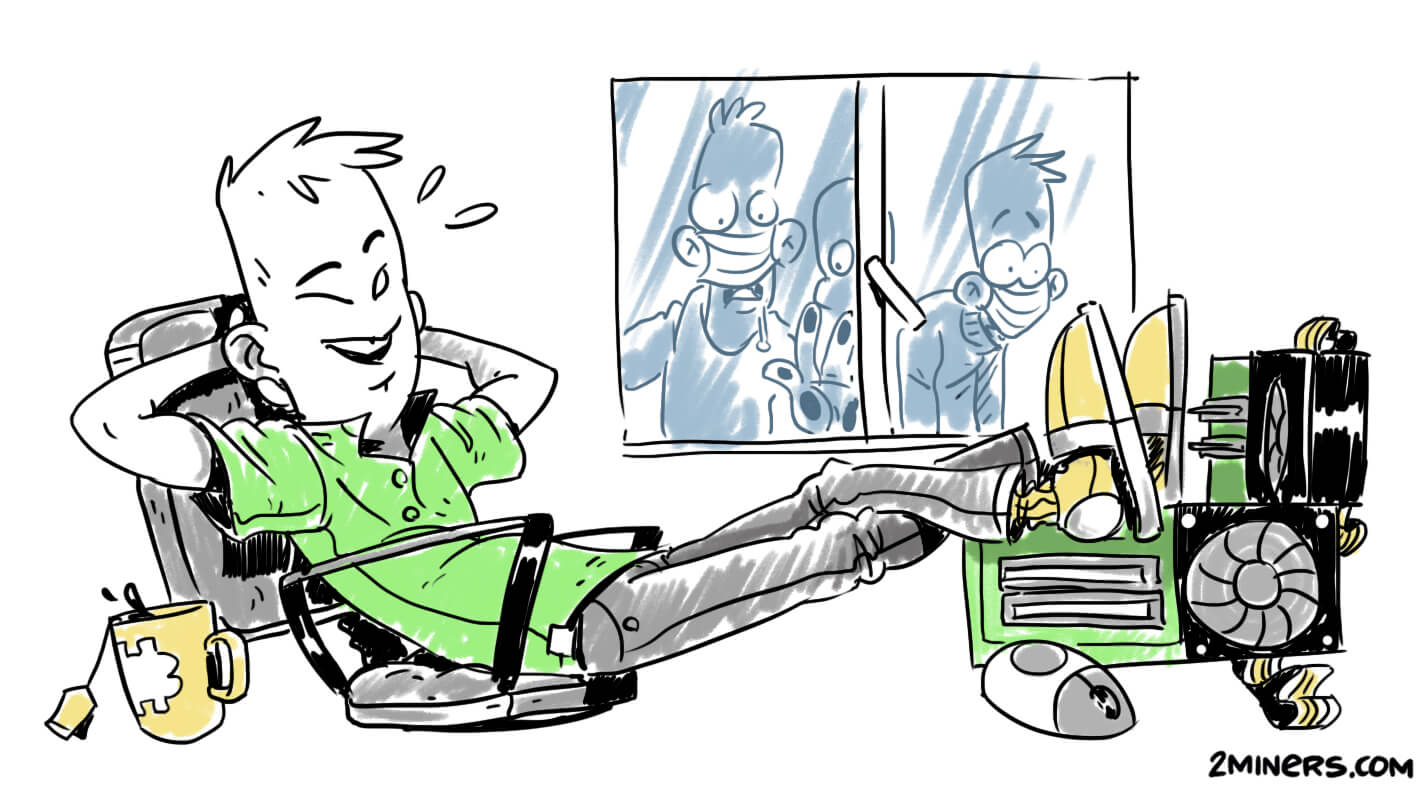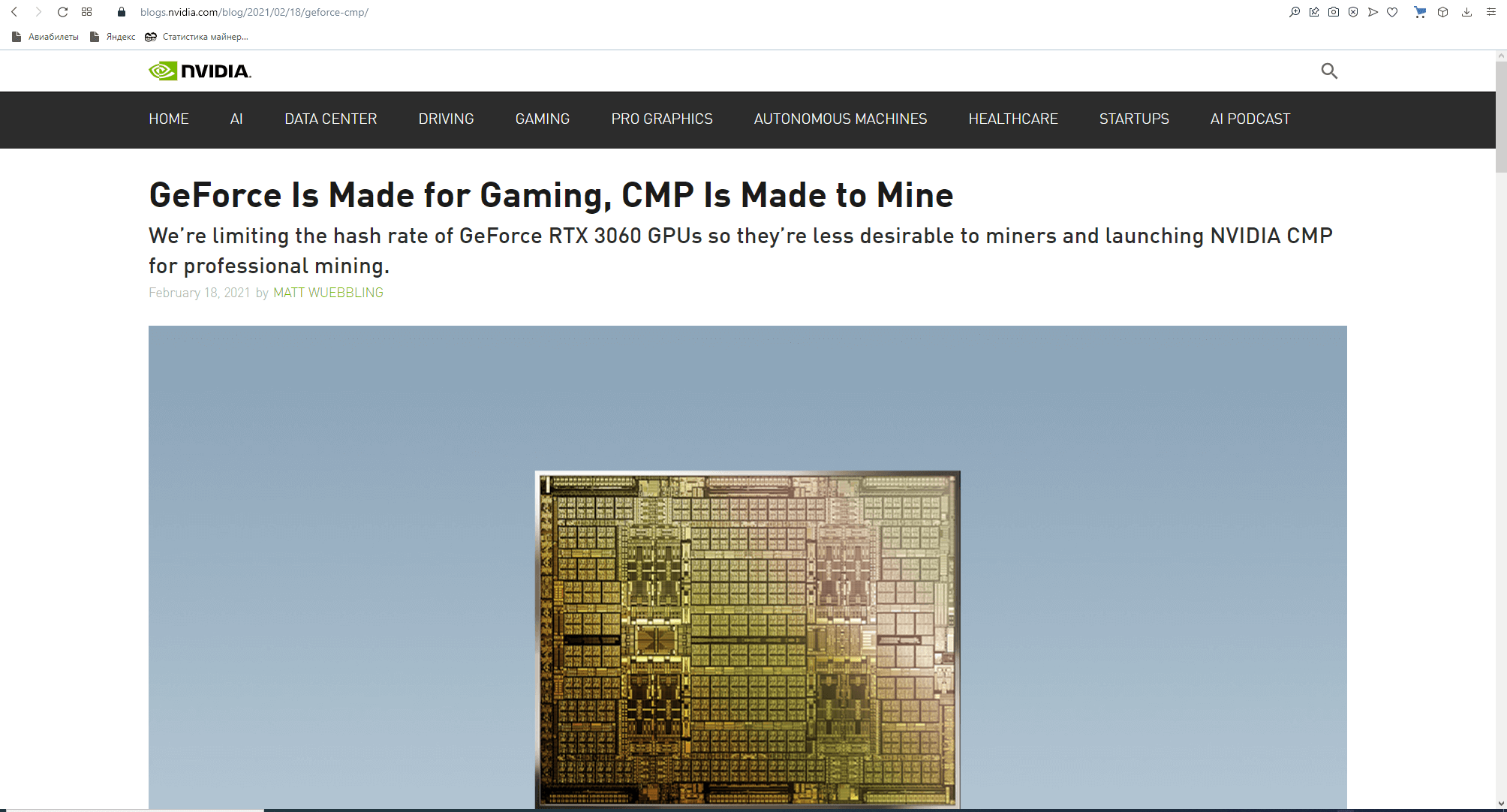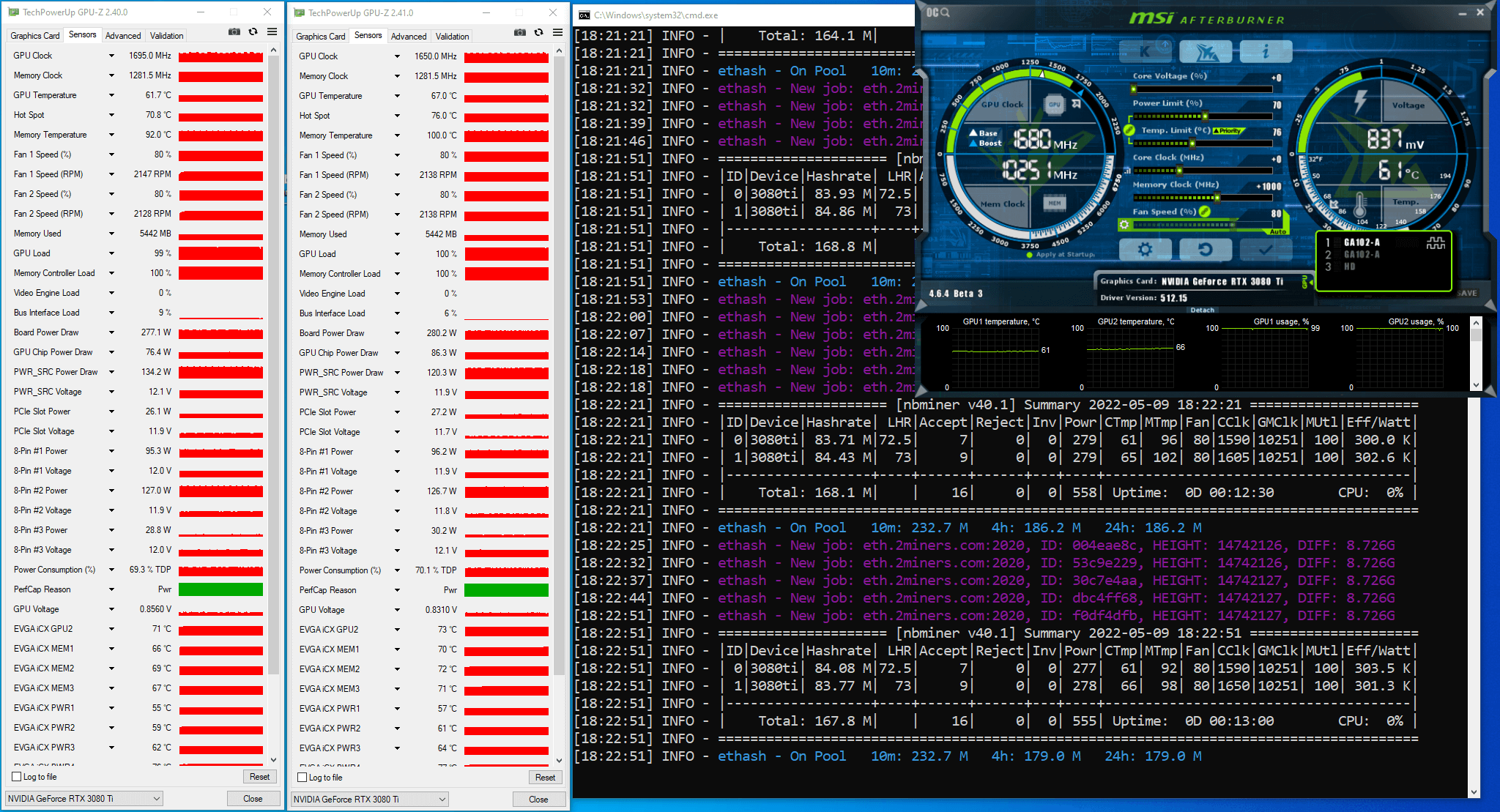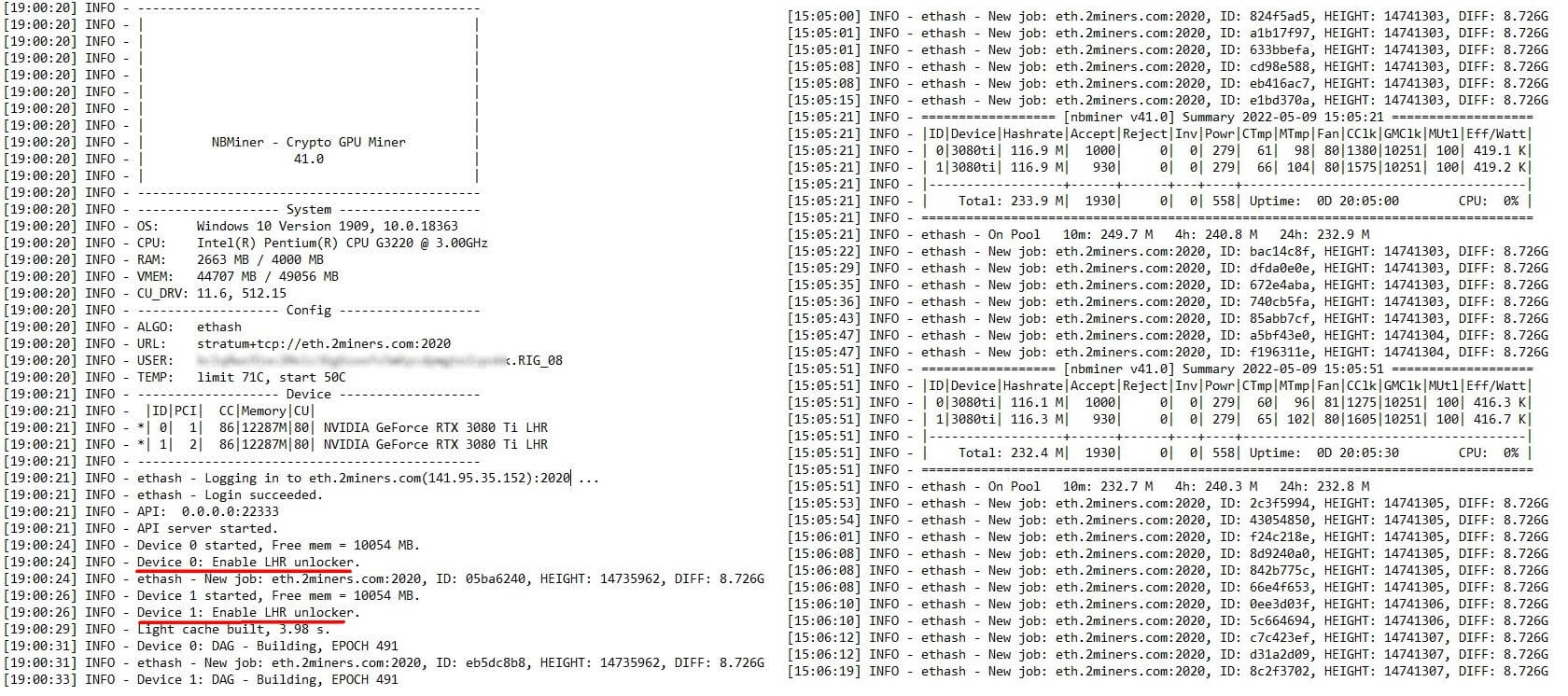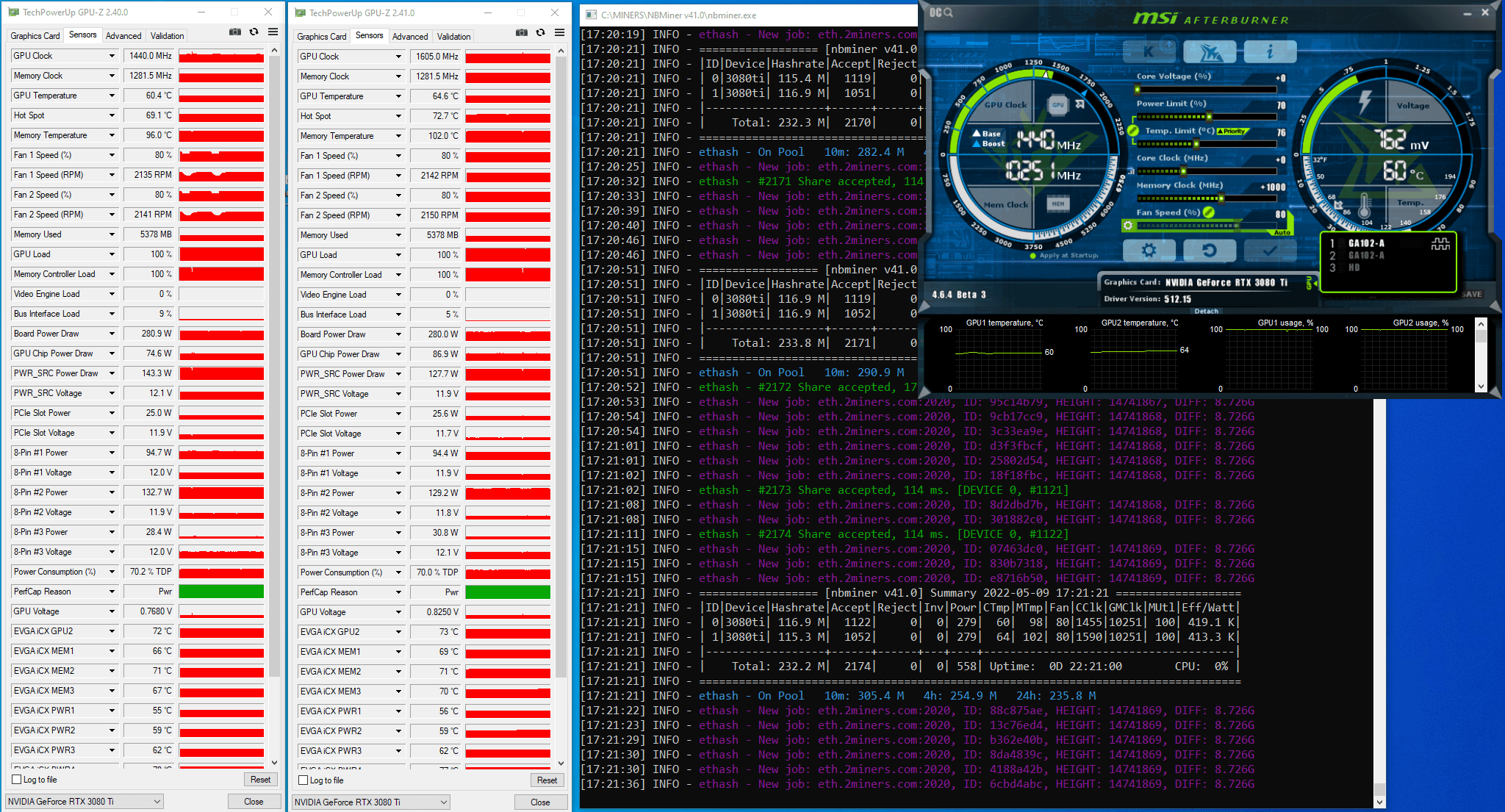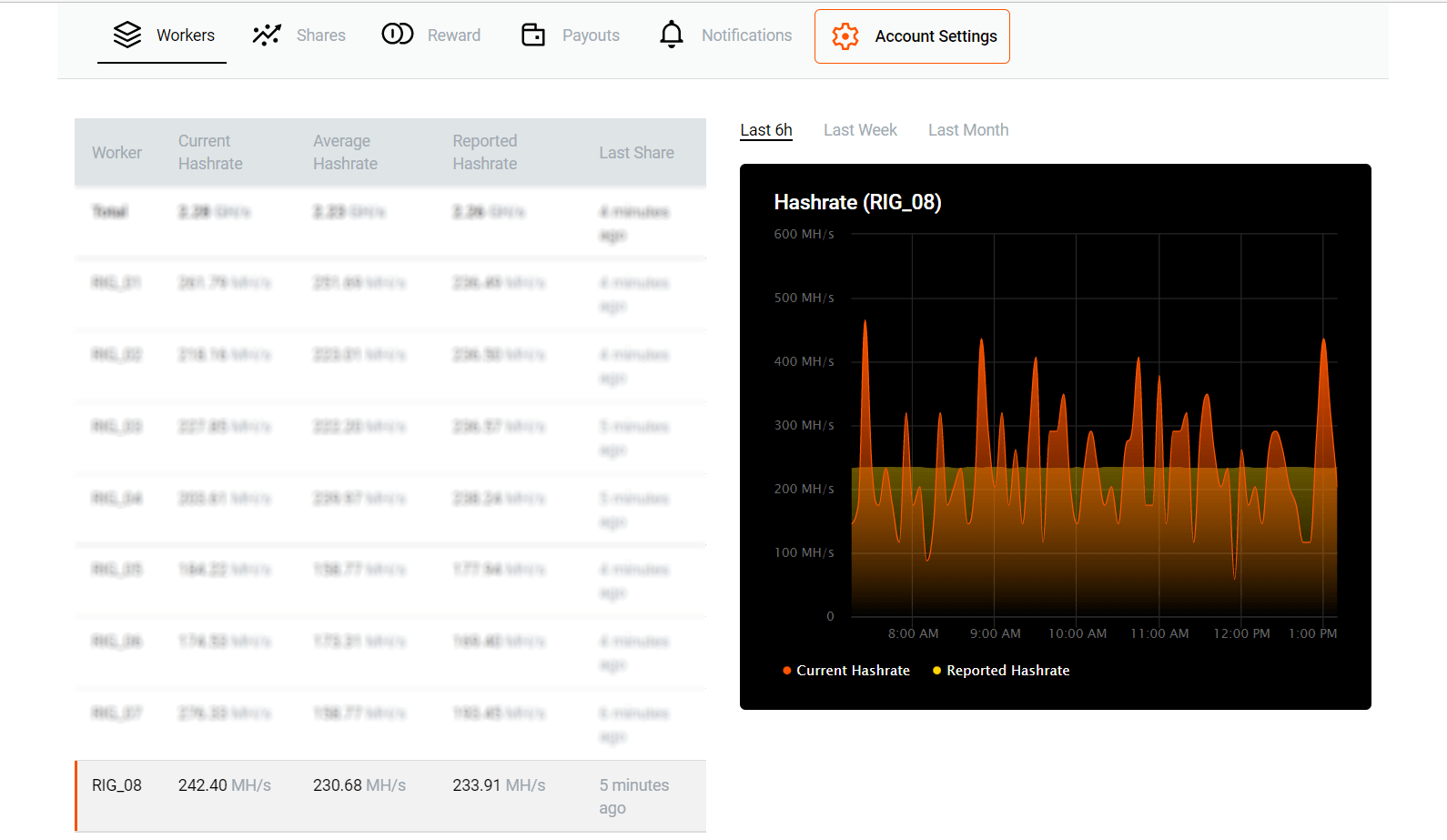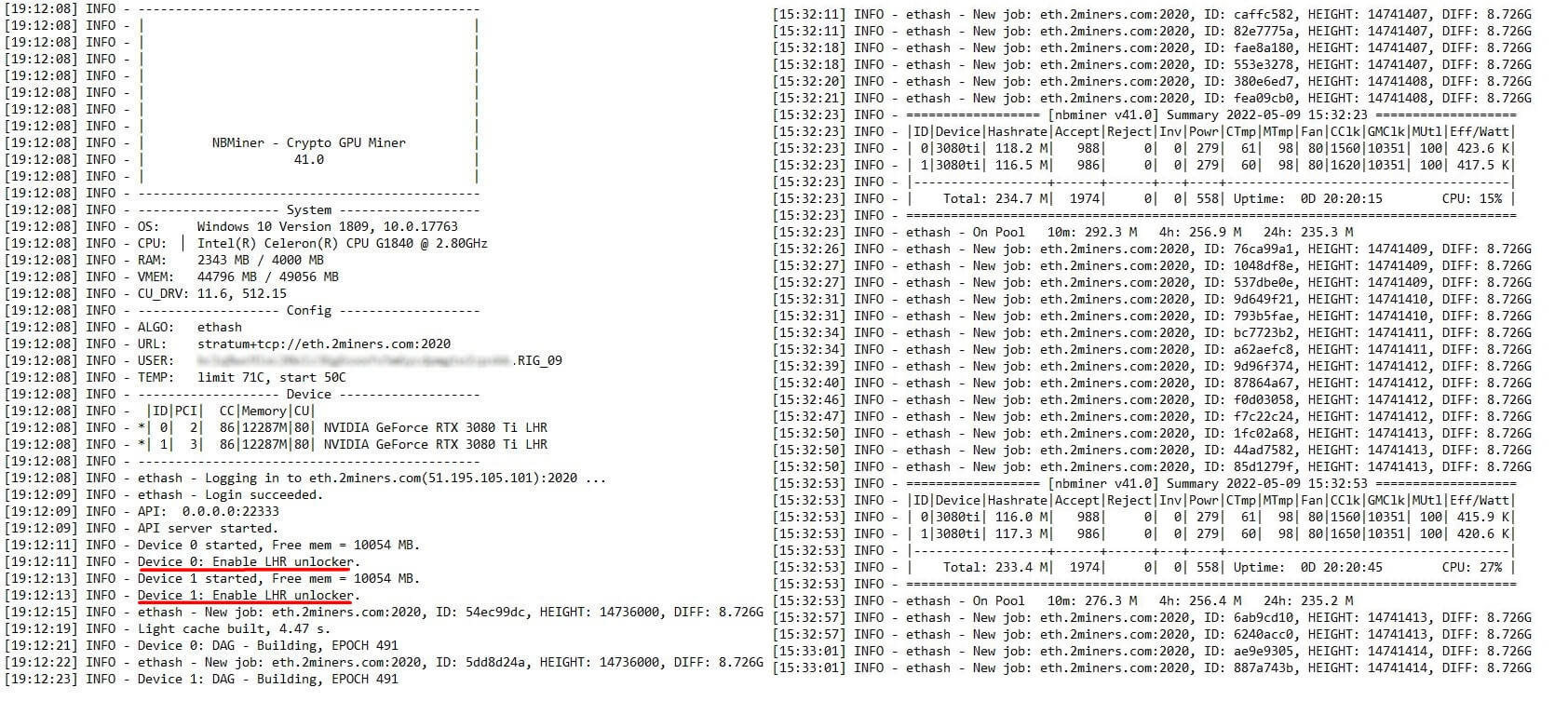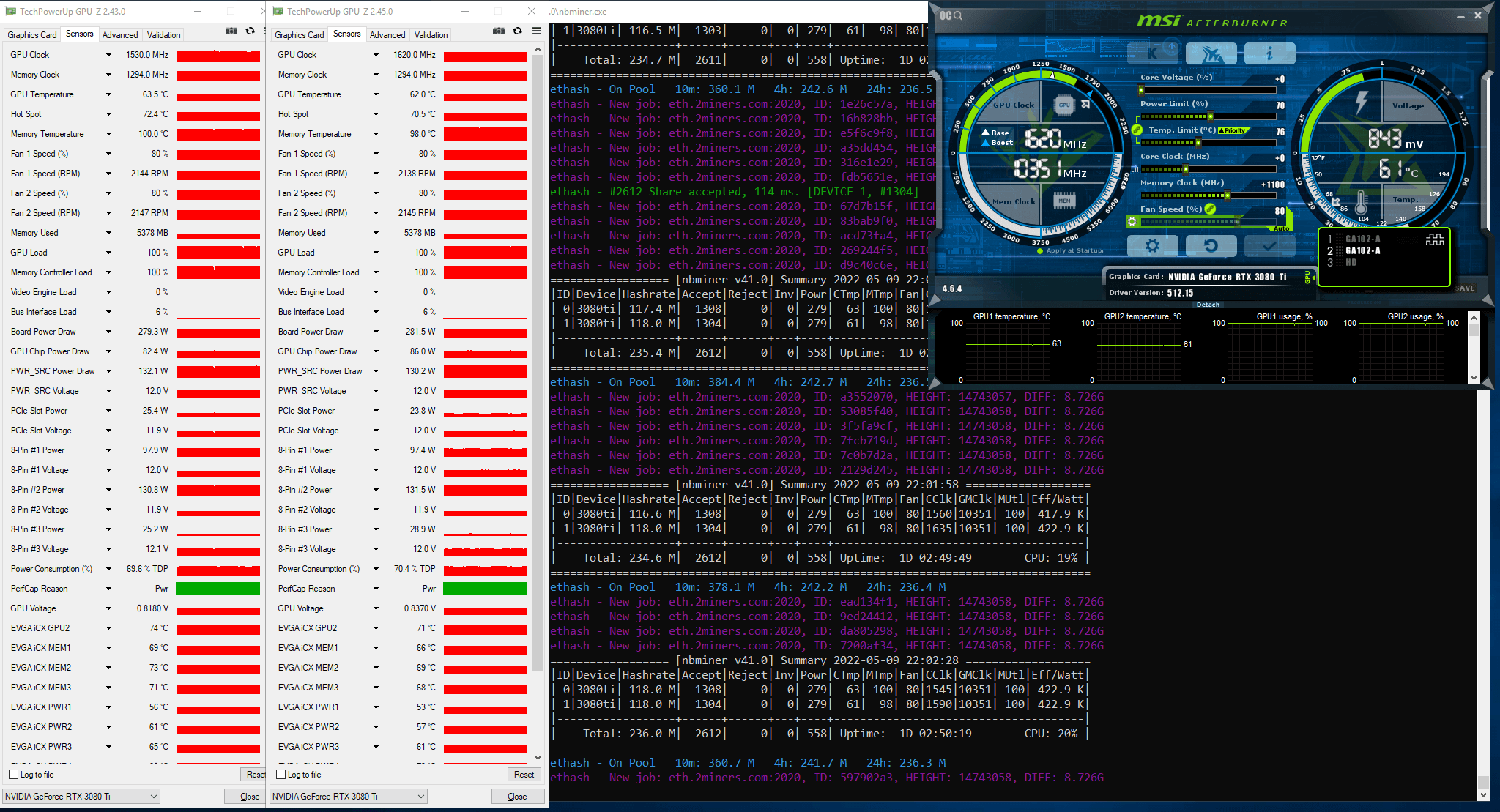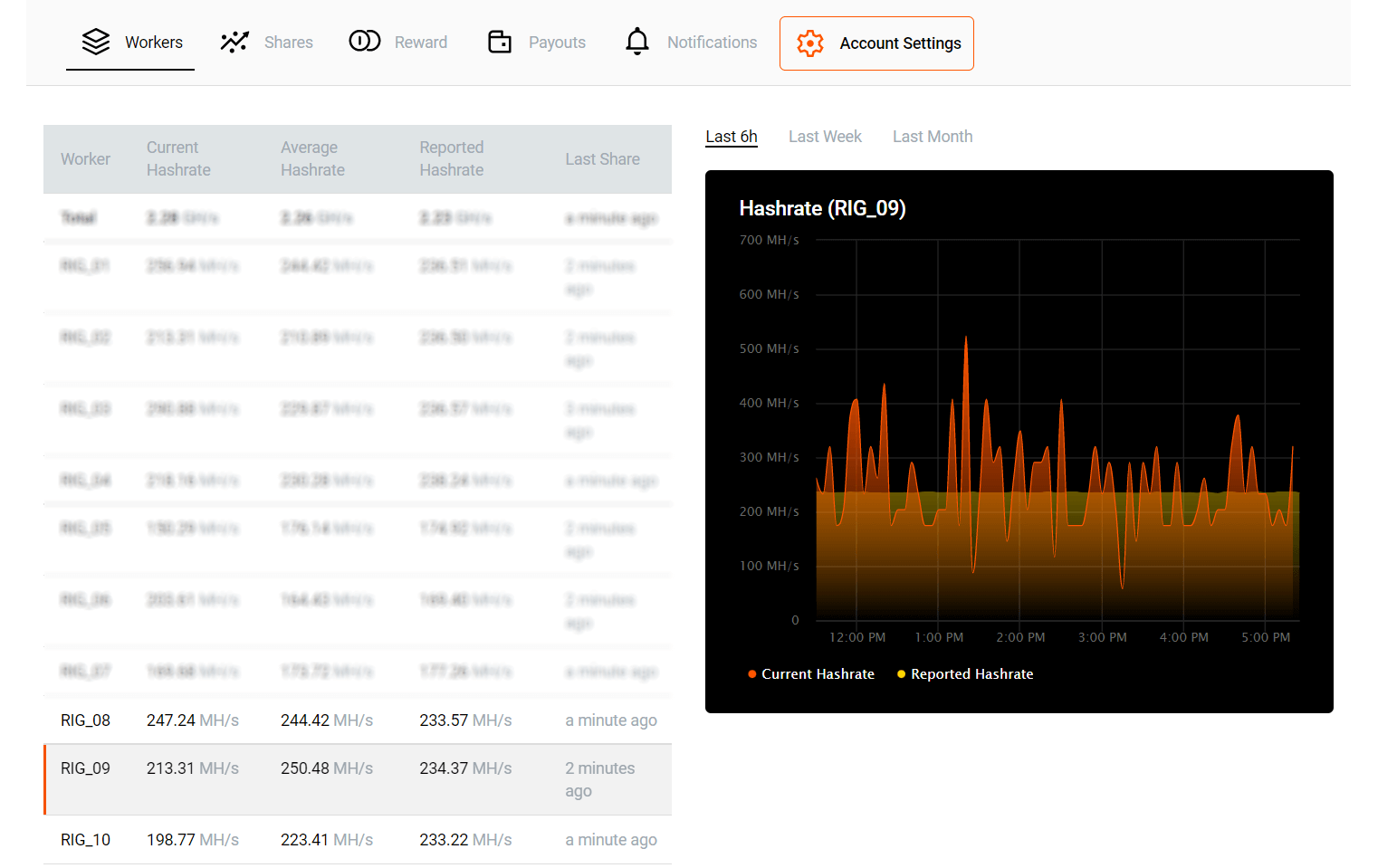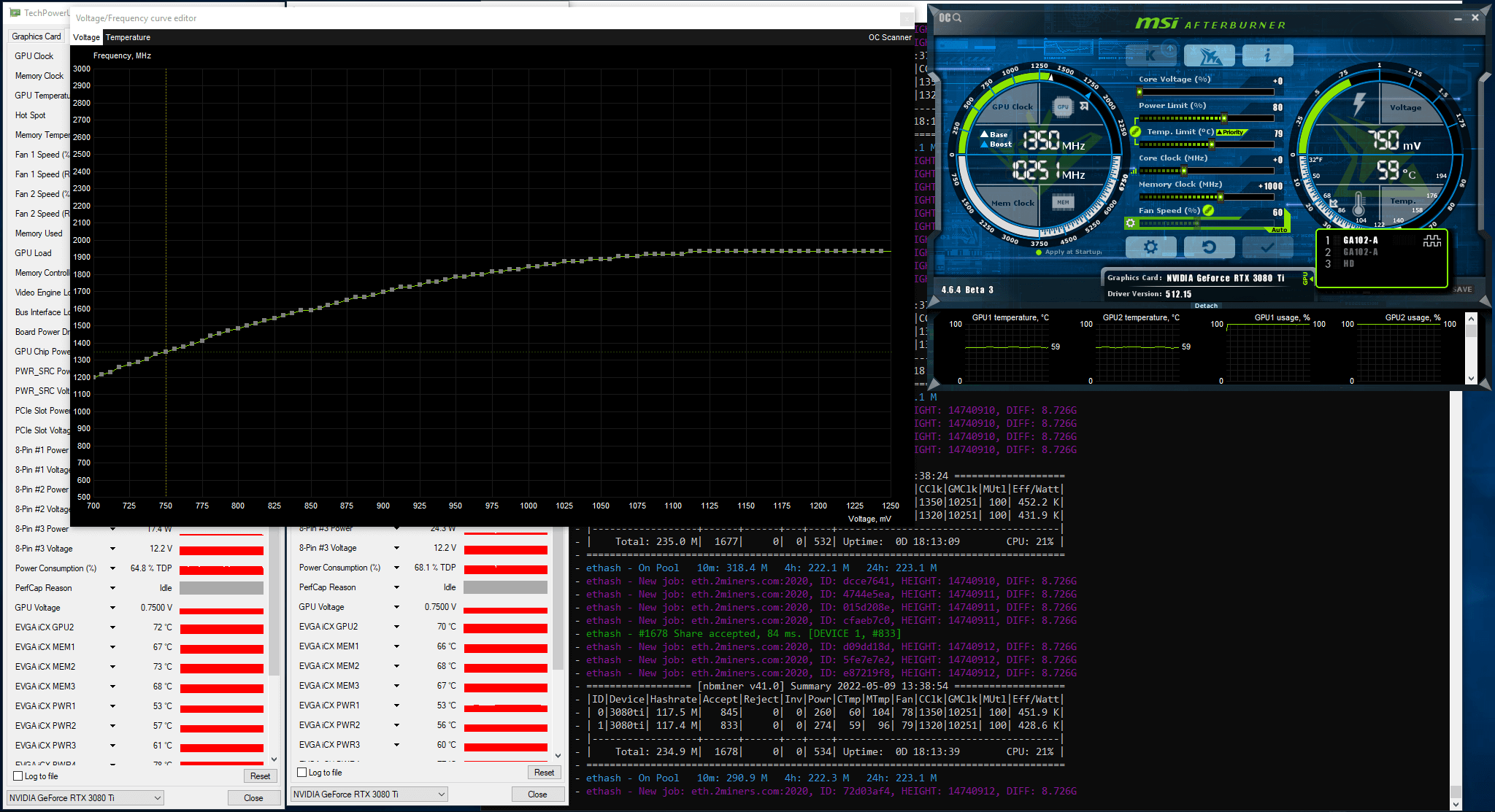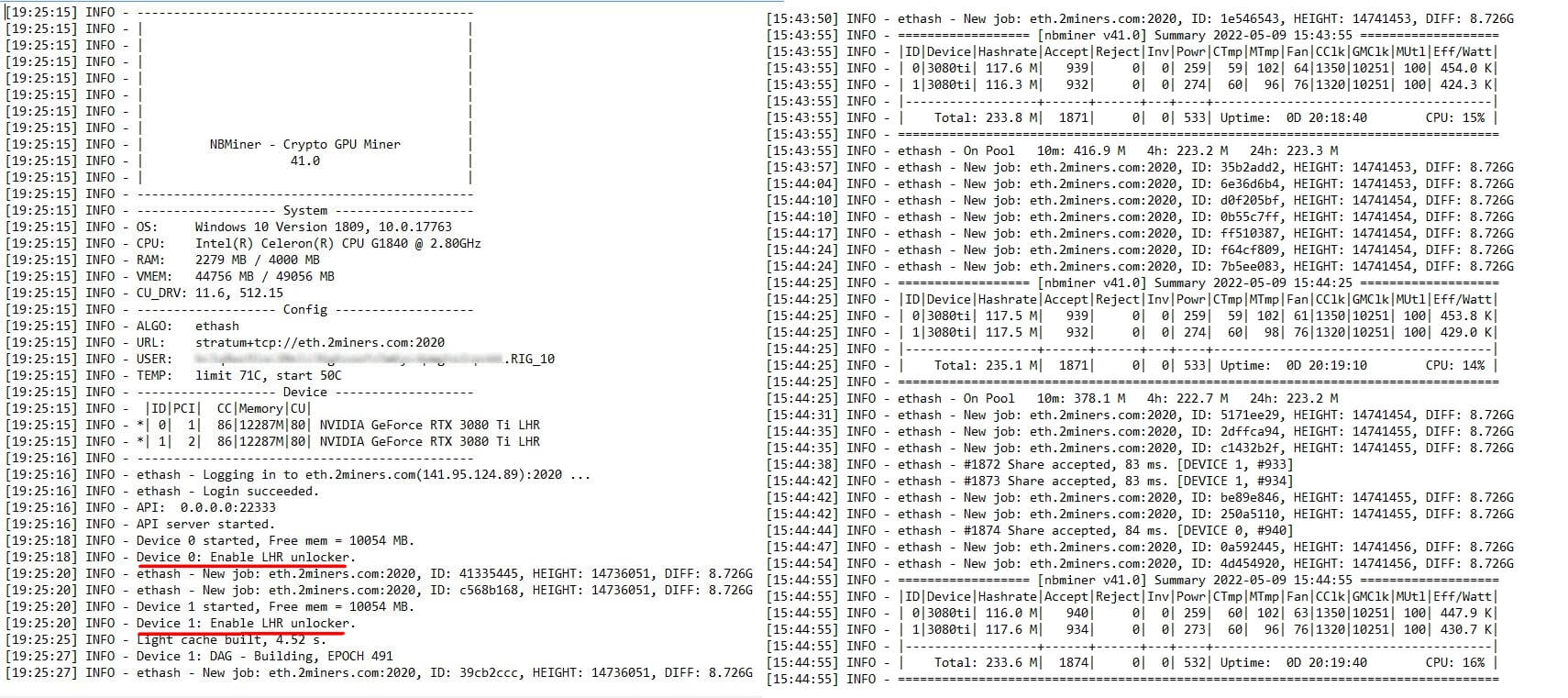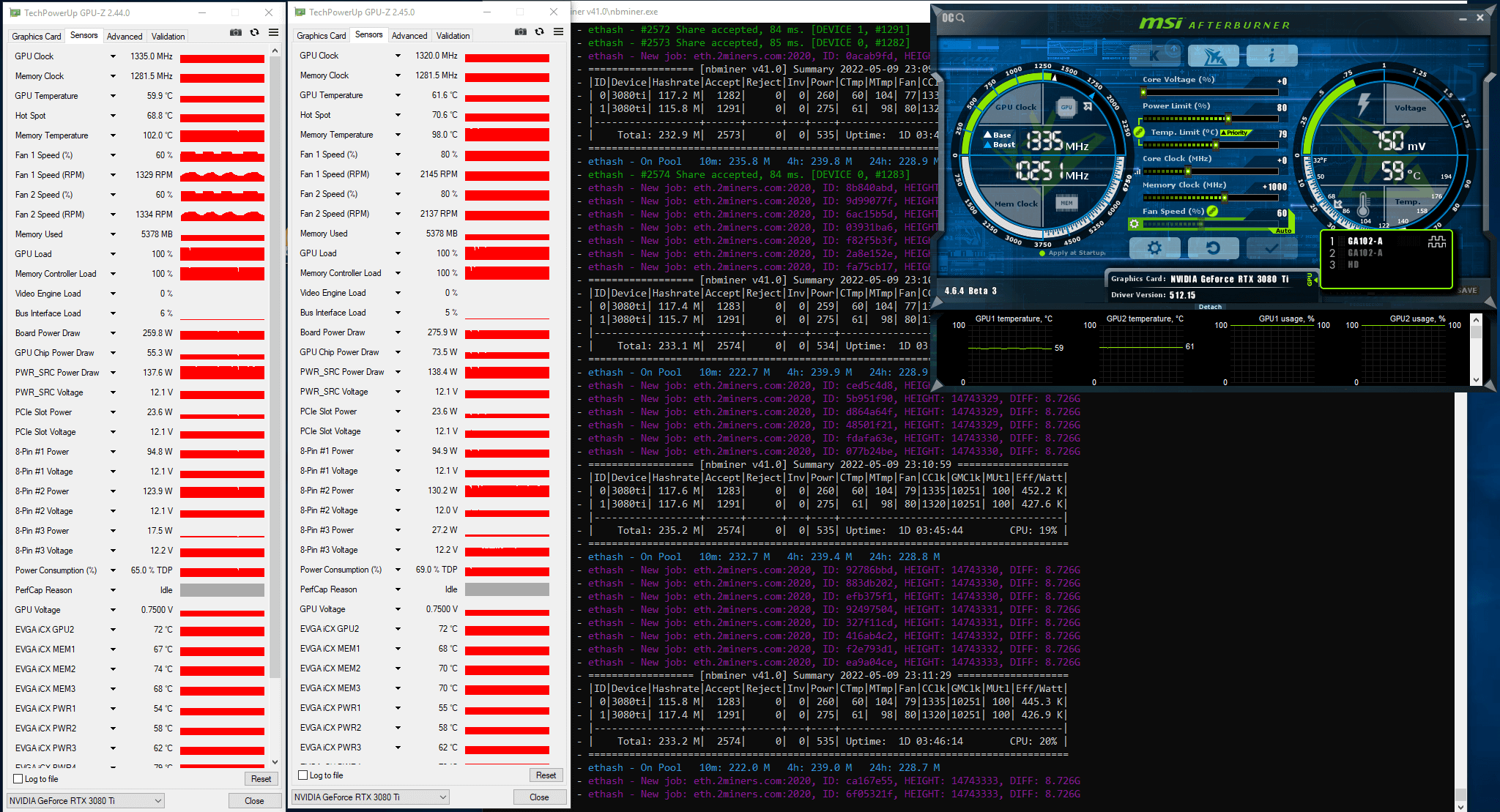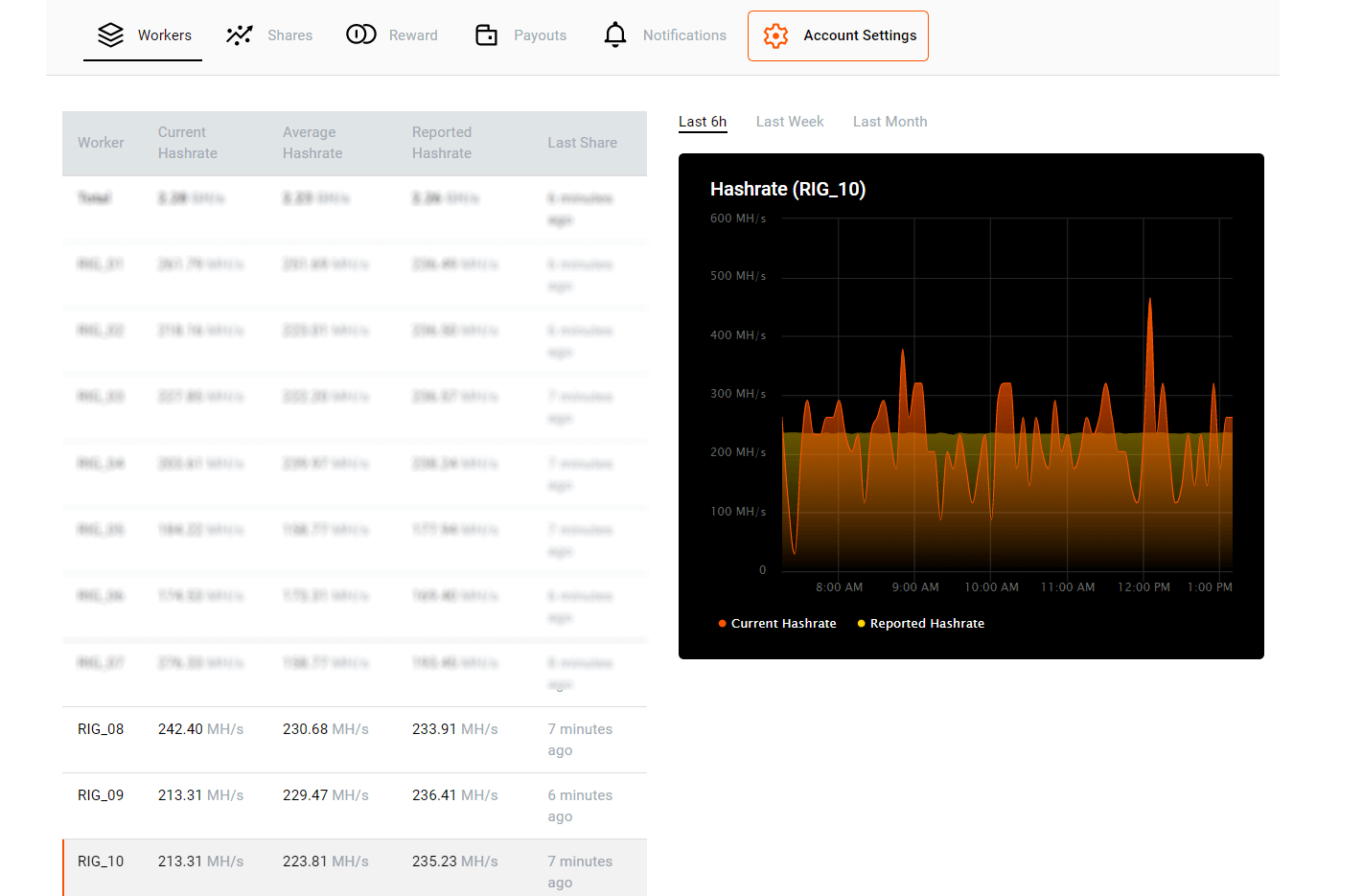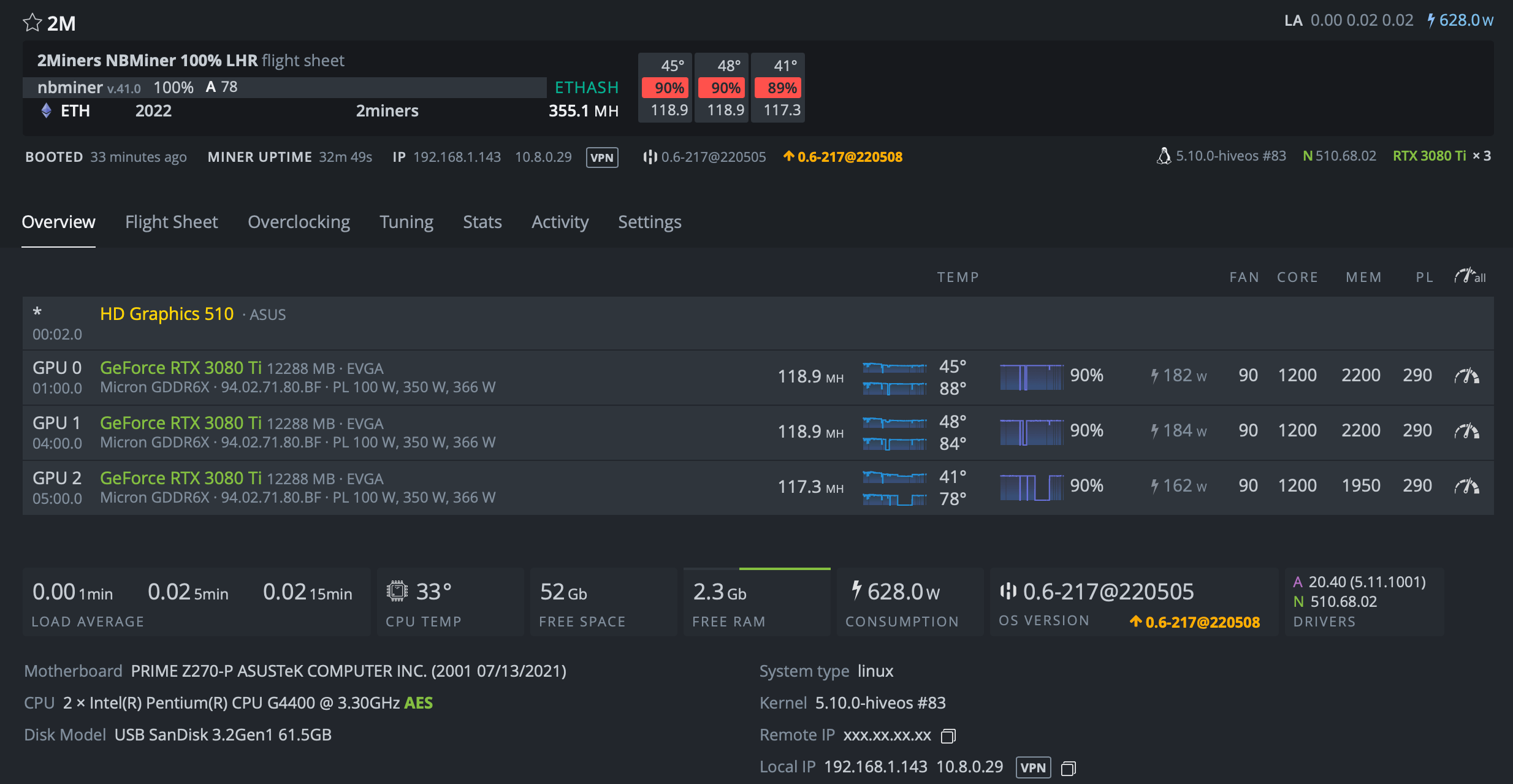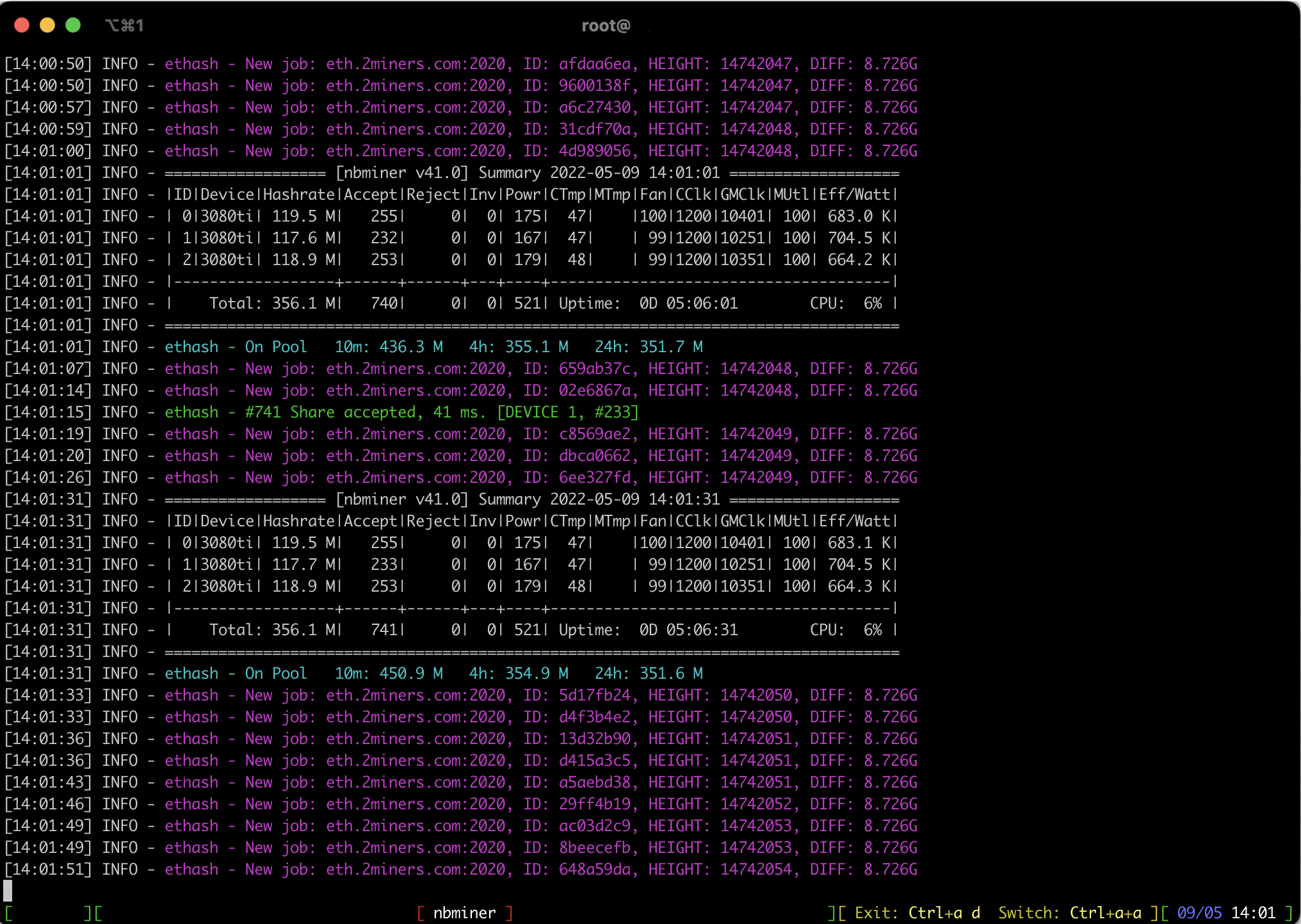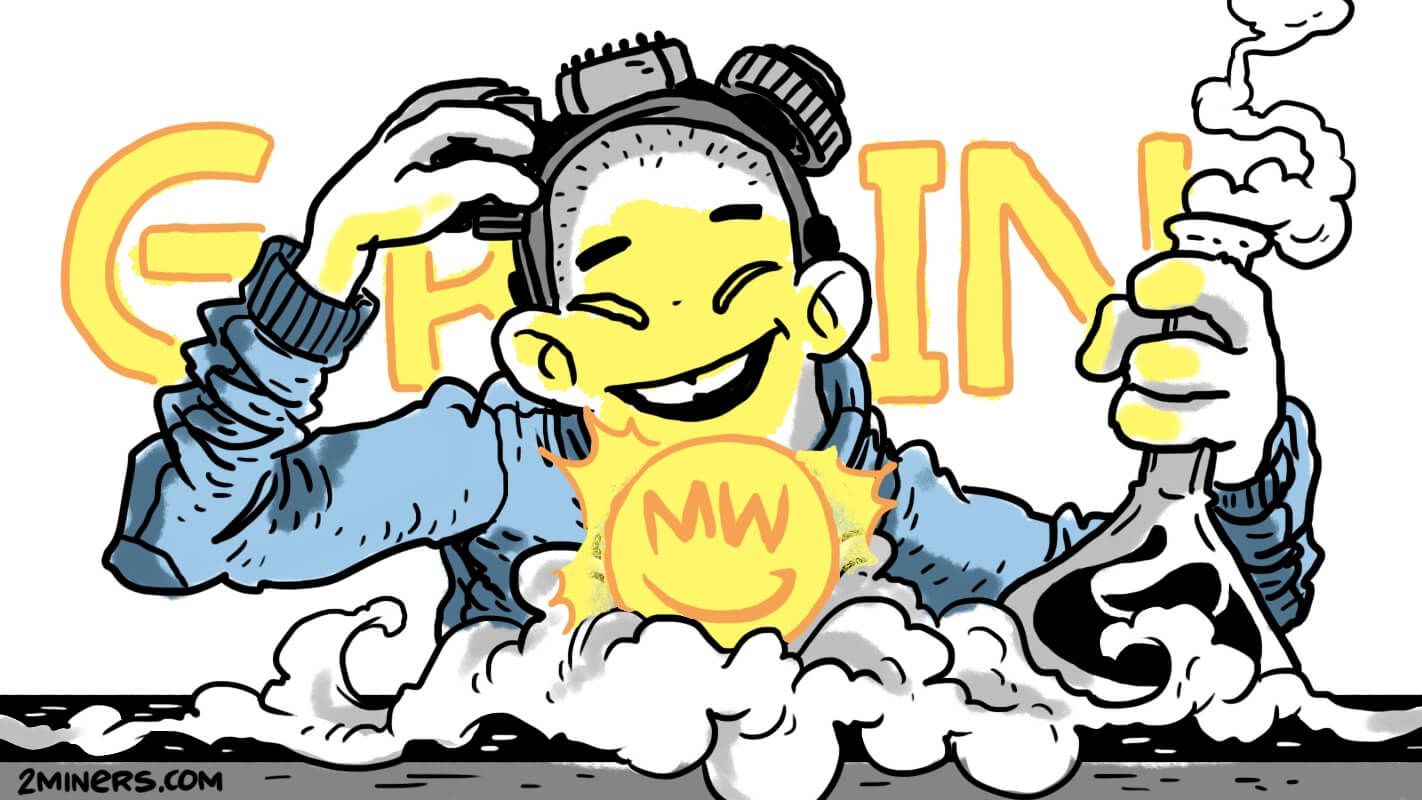Contents
What Is a LHR Graphics Card
Starting in February 2021, NVIDIA started limiting the GPU mining hash rate. They published an article in their blog titled GeForce Is Made for Gaming, CMP Is Made to Mine.
In May 2021, NVIDIA published another article titled A Further Step to Getting GeForce Cards into the Hands of Gamers. This article talks about lowering the hash rate on the Ethash algorithm for the GeForce RTX 3080, 3070, and 3060 Ti. These models became available at the end of May 2021 and were marked with a “Lite Hash Rate” or “LHR” identifier.
At the end of May 2021, NVIDIA announced the GeForce RTX 3080 Ti and GeForce RTX 3070 Ti. You can read the full announcement here.
These GPUs weren’t marked as LHR, but even before the release, there were rumors online about the limited hash rate on Ethash. The rumors about LHR were confirmed after the release and testing.
The active expert discussion of the term LHR started in May 2021.
Test Mining Rig. Estimating Potential Max Hash Rate and LHR Impact
Here is the the configuration of the mining rig we used for this test:
- Motherboard: BIOSTAR Hi-Fi B85S2
- CPU: Intel Pentium G3220
- Memory: DDR3 SDRAM Kingston 4Gb
- HDD: Seagate Barracuda 7200.12 160Gb
- PSU: EVGA 1000 GQ 80+ GOLD 1000W
- GPU: EVGA GeForce RTX 3080 Ti FTW3 ULTRA GAMING
- Two GPUs were connected to the motherboard, each through the riser PCI-E X16-X1.
- OS: Windows 10
- Nvidia drivers: 512.15
- Overclocking: MSI Afterburner
- Monitoring: GPU-Z
Testing was held on three different rigs with the same setup, indoors, with the room temperature at +15 °C (59 °F).
We already described how we estimated the potential max hash rate for the RTX 3080 Ti on Ethash and Etchash algorithms in the article titled How to Increase Mining Hash Rate. Unlocking LHR Graphics Cards with Gminer.
The potential max hash rate without LHR lock on Ethash and Etchash is 116 MH/s. LHR lock causes the hash rate to drop to 64 MH/s (by 45%).
NBMiner: Review & Testing
NBminer is a universal program for cryptocurrency mining on GPUs that supports both AMD and NVIDIA. The mining program has been in development since 2018. As of now, NBminer supports such popular algorithms as Ethash, Kawpow, Octopus, Autolykos2, Cuckoo, and Beamv3.
The miner developers keep in touch with their users on popular platforms and social media.
- Website: https://nbminer.com
- Github: https://github.com/NebuTech/NBMiner
- BitcoinTalk: https://bitcointalk.org/index.php?topic=5099379
NBminer Release History
On August 15, 2021, NBminer developers released the v.39.0, the first mining program that unlocked LHR to 70% of the potential max hash rate. The miner hash rate on Ethash ranged between 77 MH/s and 78 MH/s. Memory Controller Load and GPU Load charts were stable, and the Board Power Draw chart – with slight leaps.
Such settings allow NBminer v.39.0 to unlock LHR to 67% of the potential max hash rate.
On November 24, 2021, the developers released NBminer v.40.1 which greatly improved the performance of LHR graphics cards. The miner hash rate on Ethash ranged between 83 MH/s and 85 MH/s. Memory Controller Load and GPU Load charts were stable, and the Board Power Draw chart – with slight leaps. Such settings allowed NBminer v.40.1 to unlock LHR to 72% from the potential max hash rate.
NBminer v.41.0 Review
On May 8, 2022, the developers announced NBminer v.41.0. Click here to download the miner and read about its features.
This version promised to unlock LHR to 100%. To achieve this, the developers recommend using the 512.15 video driver for Windows and 510.60 video driver for Linux, as well as running the mining program as admin. For better stability, you should also lower GPU memory overclocking by 100–200 MHz (in comparison with the previous versions).
We launched the mining program on the first rig with the following GPU settings: PL(%): 70, CC(MHz): +0, MC(MHz): +1000.
Bat-file:
nbminer -a ethash -o stratum+tcp://eth.2miners.com:2020 -u WALLET_ADDRESS.RIG_08 --temperature-limit 71 --temperature-start 50 --log
pause
Here is the log file data right after the miner launch and after 20 hours of operation:
We encountered ‘Enable LHR unlocker’ only once, at the very beginning of the log file. We didn’t encounter ‘LHR lock’ in the log file and didn’t restart the miner.
The miner was active for 22 hours and 21 minutes. The miner hash rate on Ethash ranged between 115 MH/s and 116 MH/s. Memory Controller Load and GPU Load charts were stable, and the Board Power Draw chart – with slight leaps.
Based on the number of shares sent to the pool, we estimated the miner hash rate. Initial data: 2174 shares (GPU0: 1122; GPU1: 1052) in 22.35 hours, share difficulty is 8726 M. We multiplied the number of shares per second by share difficulty and got 235.8 MH/s. This is a hash rate of two GPUs. We can also estimate the hash rate per GPU: GPU0 – 121.7 MH/s, GPU1 – 114.1 MH/s.
We recommend extending the testing period to get statistically correct results: each card should send over 5000 shares to the pool.
Below is the Stats page of the pool with the results of the rig operation.
We launched the mining program on the second rig with the following GPU settings: PL(%): 70, CC(MHz): +0, MC(MHz): +1100.
Bat-file:
nbminer -a ethash -o stratum+tcp://eth.2miners.com:2020 -u WALLET_ADDRESS.RIG_09 --temperature-limit 71 --temperature-start 50 --log
pause
Here is the log file data right after the miner launch and after 20 hours of operation:
We encountered ‘Enable LHR unlocker’ only once, at the very beginning of the log file. We didn’t encounter ‘LHR lock’ in the log file and didn’t restart the miner.
The miner was active for 26 hours and 50 minutes. The miner hash rate on Ethash ranged between 117 MH/s and 118 MH/s. Memory Controller Load and GPU Load charts were stable, and the Board Power Draw chart – with slight leaps.
Based on the number of shares sent to the pool, we estimated the miner hash rate. Initial data: 2612 shares (GPU0: 1308; GPU1: 1304) in 26.83 hours, share difficulty is 8726 M. We multiplied the number of shares per second by share difficulty and got 235.9 MH/s. This is a hash rate of two GPUs. We can also estimate the hash rate per GPU: GPU0 – 118.2 MH/s, GPU1 – 117.8 MH/s.
We recommend extending the testing period to get statistically correct results: each card should send over 5000 shares to the pool.
Below is the Stats page of the pool with the results of the rig operation.
We set up GPUs on the next rig by fixing GPU frequency and voltage. We used the Voltage/Frequency Curve Editor in MSI Afterburner.
We launched the mining program on the third rig with the following GPU settings: PL(%): 80, CC (MHz): -109 fix Voltage(mV) 750, MC (MHz): +1000.
When you fix the voltage, choose a point that will let you run the miner with a Core Clock (CC) of 1300–1350 MHz.
Bat-file:
nbminer -a ethash -o stratum+tcp://eth.2miners.com:2020 -u WALLET_ADDRESS.RIG_10 --temperature-limit 71 --temperature-start 50 --log
pause
Here is the log file data right after the miner launch and after 20 hours of operation:
We encountered ‘Enable LHR unlocker’ only once, at the very beginning of the log file. We didn’t encounter ‘LHR lock’ in the log file and didn’t restart the miner.
The miner was active for 27 hours and 46 minutes. The miner hash rate on Ethash ranged between 115 MH/s and 118 MH/s. Memory Controller Load and GPU Load charts were stable, and the Board Power Draw chart – with slight leaps.
Based on the number of shares sent to the pool, we estimated the miner hash rate. Initial data: 2574 shares (GPU0: 1283; GPU1: 1291) in 27.77 hours, share difficulty is 8726 M. We multiplied the number of shares per second by share difficulty and got 224.7 MH/s. This is a hash rate of two GPUs. We can also estimate the hash rate per GPU: GPU0 – 112 MH/s, GPU1 – 112.7 MH/s.
We recommend extending the testing period to get statistically correct results: each card should send over 5000 shares to the pool.
Below is the Stats page of the pool with the results of the rig operation.
We tested the miner with HiveOS.
The miner was active for 5 hours and 6 minutes. The miner hash rate on Ethash ranged between 117 MH/s and 119 MH/s.
Based on the number of shares sent to the pool, we estimated the miner hash rate. Initial data: 741 shares (GPU0: 255; GPU1: 233; GPU2: 253) in 5.1 hours, share difficulty is 8726 M. We multiplied the number of shares per second by share difficulty and got 352.2 MH/s. This is a hash rate of three GPUs. We can also estimate the hash rate per GPU: GPU0 – 121.2 MH/s, GPU1 – 110.7 MH/s, GPU2: 120.2 MH/s.
We recommend extending the testing period to get statistically correct results: each card should send over 5000 shares to the pool.
Such settings allow NBminer v.41.0 to unlock LHR to 100% of the potential max hash rate.
NBminer v.41.3 Release
As of now, the latest miner version is NBminer v.41.3. The LHR unlocker is now much more stable, the failure issue on AMD graphics cards has been resolved, and it’s also more compatible with equipment low in RAM.
You should use the 512.15 driver on Windows and 510.60 on Linux. You can download the mining program on the official NBMiner website:
Final Conclusions and Suggestions
NBminer offers a universal solution to unlock LHR graphics cards.
NBminer v.39.0 unlocked LHR to 67% of the max potential hash rate on Ethash, NBminer v.40.1 – to 72% of the max potential hash rate, and the latest NBminer v.41.3 — to 100%.
Please note that we didn’t test GPUs with extreme settings. You may as well get stable results by using different settings. Make sure to overclock and test each GPU individually.
We recommend you mine Ethereum in 2Miners Mining Pool. We have an amazing BTC and NANO payouts system that saves you a lot on payouts processing. You could find the basic settings below.
nbminer -a ethash -o stratum+tcp://eth.2miners.com:2020 -u WALLET_ADDRESS.RIG_ID
Join our Ethereum Mining Pool.
If you have enough hashrate you could also mine Ethereum in SOLO. Please check your chances on 2CryptoCalc before.
Share your thoughts in our cryptochat. Join the discussion about the latest news in the blockchain industry. Remember to follow us on Twitter to get all the news as soon as possible.
